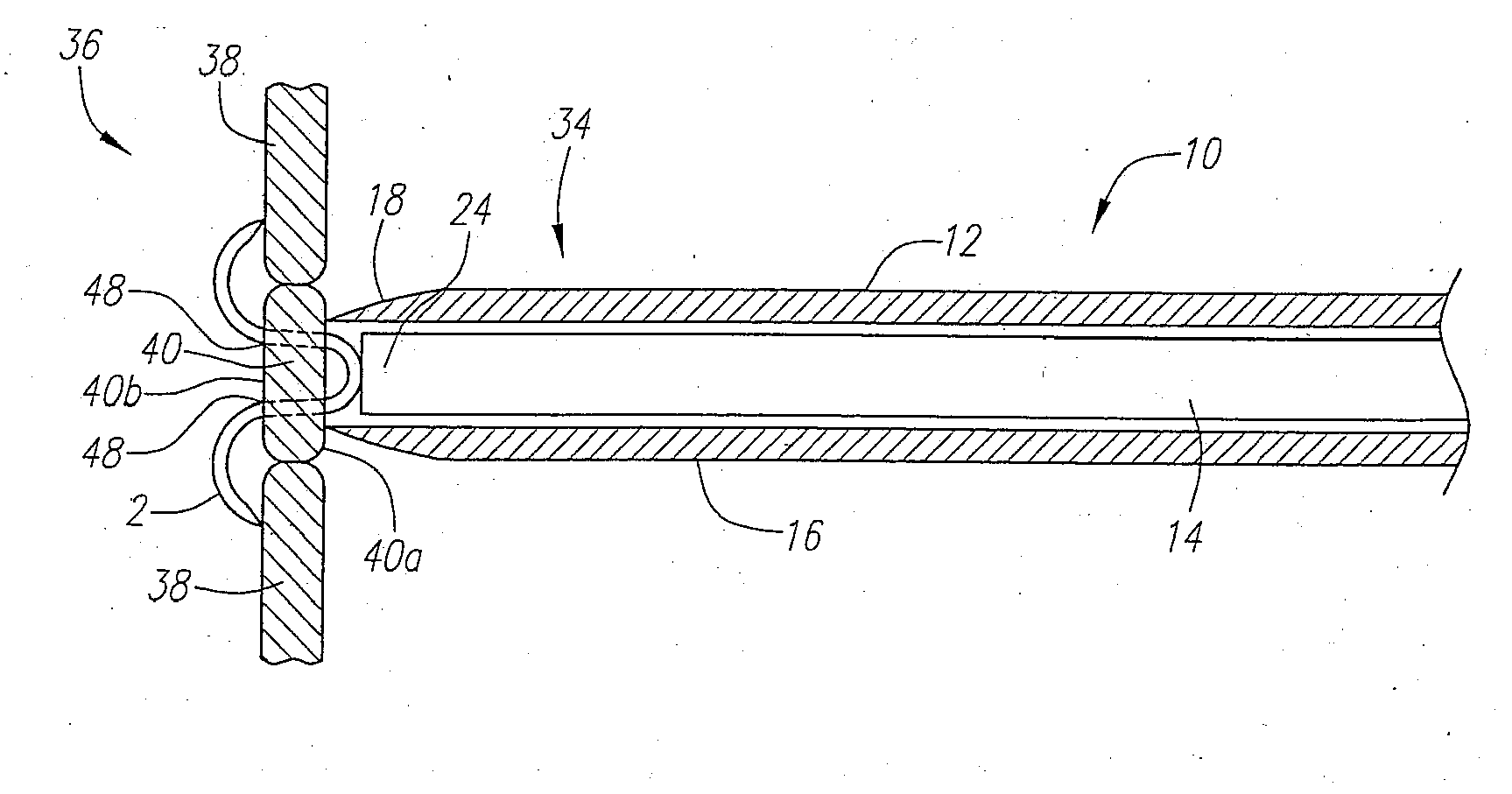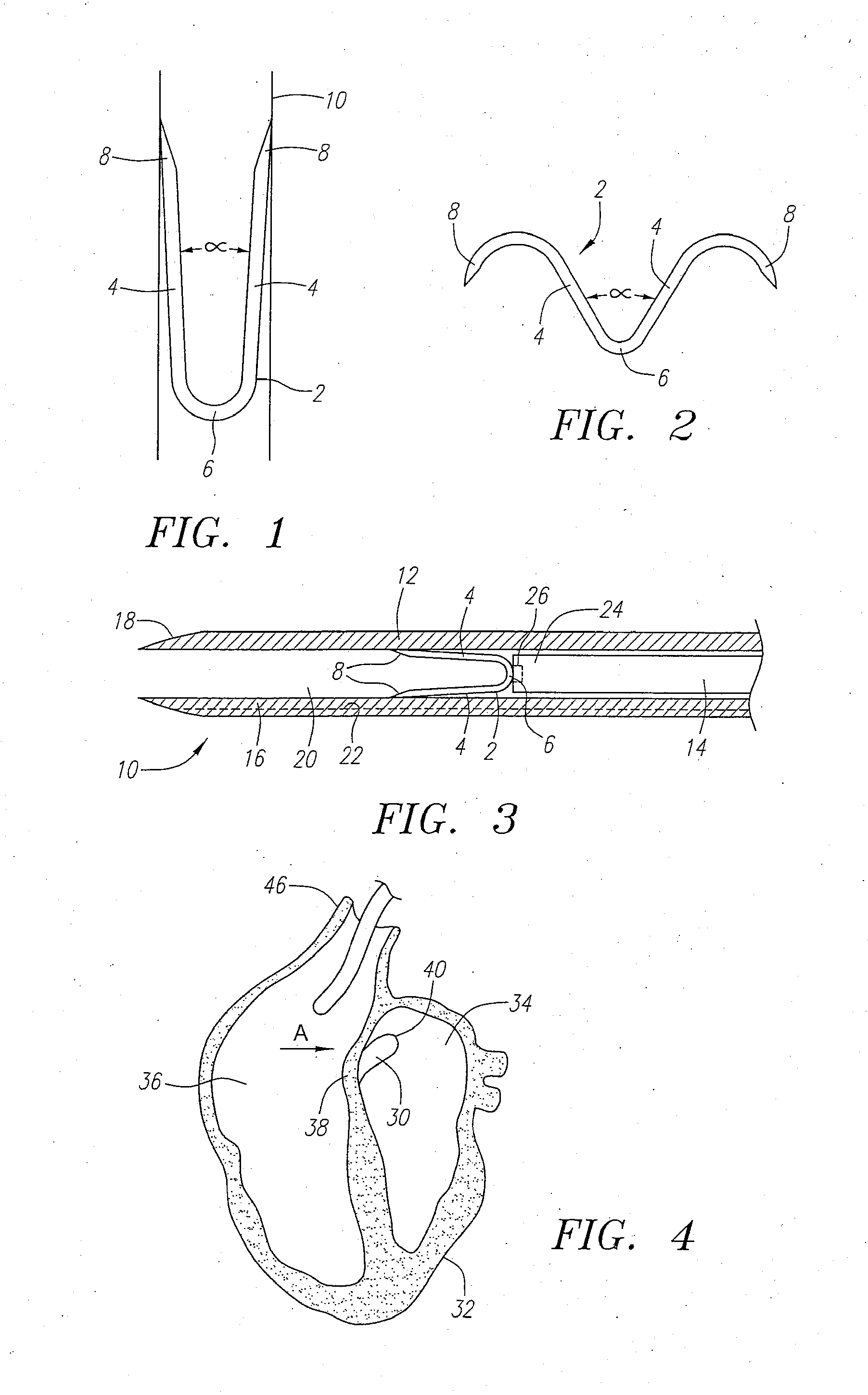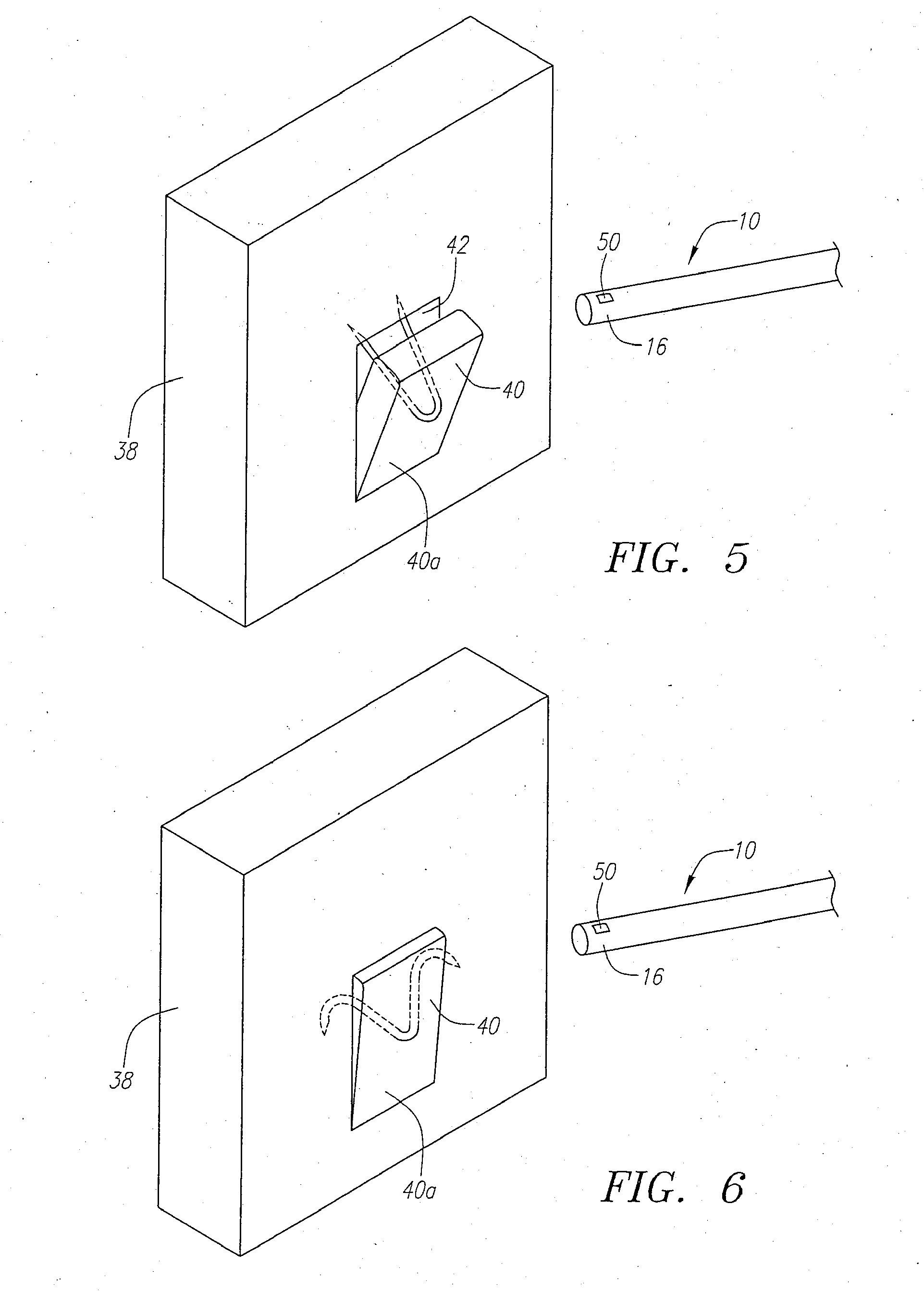Clip Apparatus For Closing Septal Defects And Methods Of Use
a technology of septal defect and suture, applied in the field of suture, can solve the problems of paradoxical embolism or stroke risk, high surgical cost, and serious health risks for individuals, and achieve the effects of reducing the risk of paradoxical embolism or stroke, and reducing the risk of surgical suture insertion
- Summary
- Abstract
- Description
- Claims
- Application Information
AI Technical Summary
Benefits of technology
Problems solved by technology
Method used
Image
Examples
Embodiment Construction
[0035]FIGS. 1 and 2 illustrate a first preferred embodiment of a clip 2 that is used for closing a septal defect (i.e., PFO, ASA, VSA), in accordance with the present invention. The clip 2 includes two penetrating tines 4 that are connected to one another via an opposing retaining end 6. The tips 8 of the tines 4 are sharpened to aid in penetrating tissue. In FIG. 1, the clip 2 is shown in its stressed state. In this regard, the clip 2 may by made from an elastic material, such as stainless steel, and preferably, a superelastic material. Alternatively, the clip 2 may be formed from a shape memory alloy, one example being NITINOL. Of course, other bio-compatible elastic or superelastic materials may also be employed. The clip 2 is maintained in its stressed state by restraining the tines 4 from expanding outward. In this manner a biasing force is applied to the clip 2. The tines 4 of the clip 2 project distally from the retaining end 6, as is shown, for example, in FIG. 1. The tines ...
PUM
 Login to View More
Login to View More Abstract
Description
Claims
Application Information
 Login to View More
Login to View More - R&D
- Intellectual Property
- Life Sciences
- Materials
- Tech Scout
- Unparalleled Data Quality
- Higher Quality Content
- 60% Fewer Hallucinations
Browse by: Latest US Patents, China's latest patents, Technical Efficacy Thesaurus, Application Domain, Technology Topic, Popular Technical Reports.
© 2025 PatSnap. All rights reserved.Legal|Privacy policy|Modern Slavery Act Transparency Statement|Sitemap|About US| Contact US: help@patsnap.com



